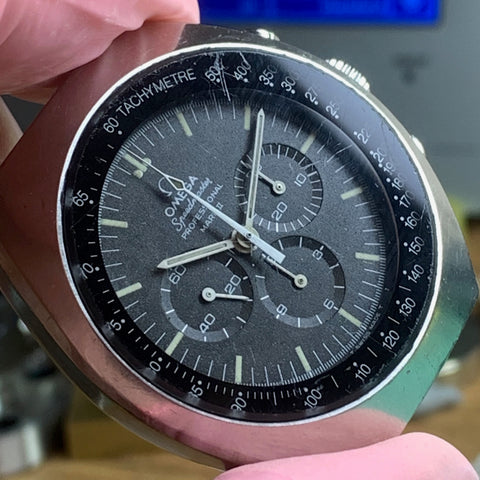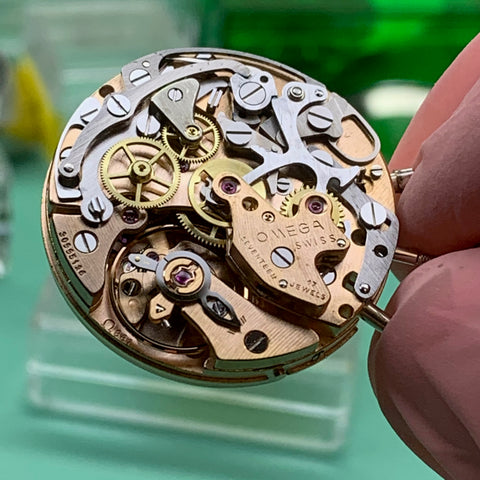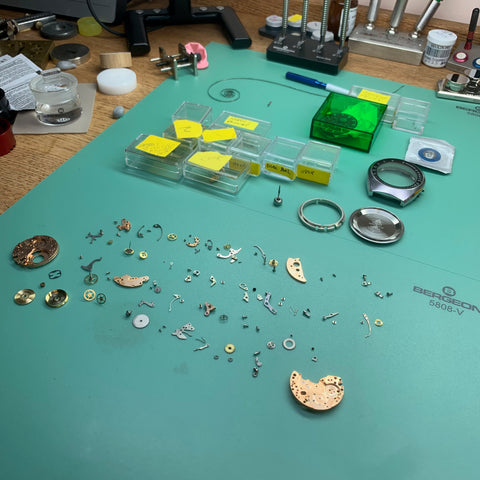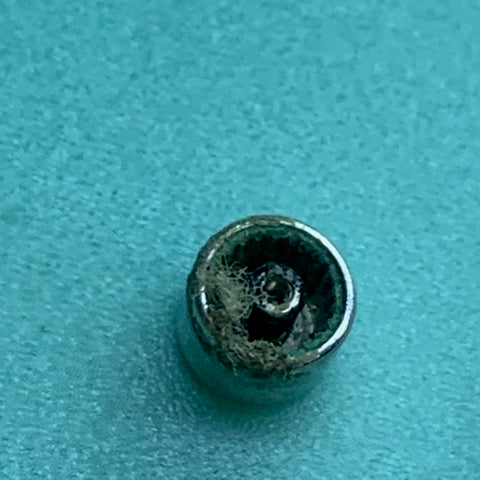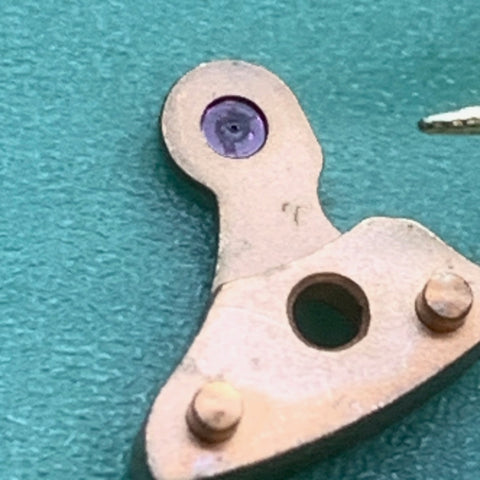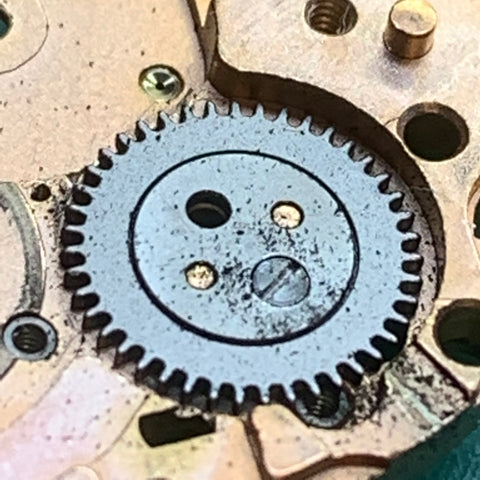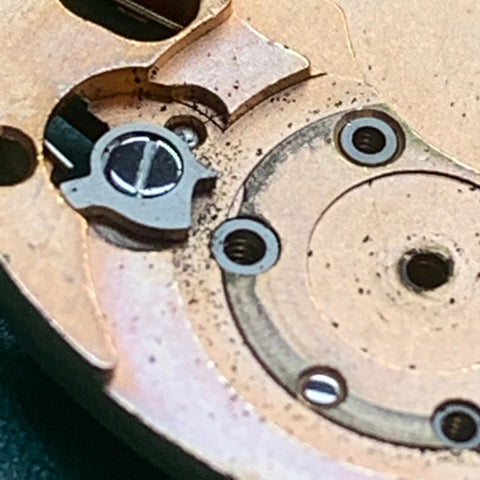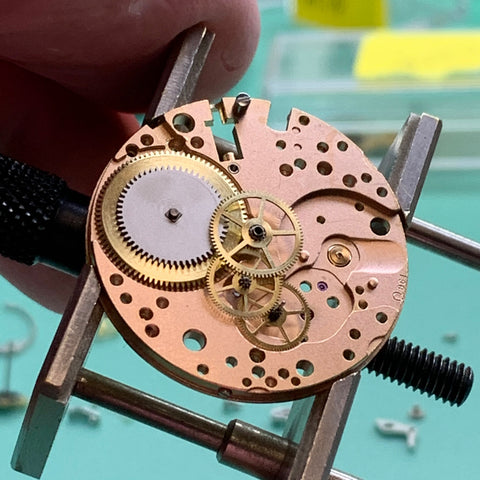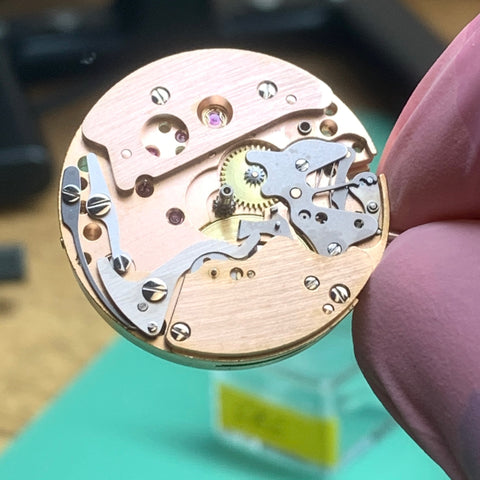This is a vintage Omega Speedmaster calibre 861 from 1969 I recently serviced for fellow Instagrammer @chronopal, the second of two he recently sent for servicing. Click here to follow ClockSavant on Instagram. Continuing with the theme of the previous posts, the owner's perception was that it was running fine but should be checked-out because he was unaware of when it was last serviced. When measured, the performance fundamentals of the watch weren't too bad. The amplitude was lower but the accuracy was reasonable. In-fact, your average Omega 861 will grind itself to a pulp delivering good timekeeping. Thus accuracy on your wrist is not a reliable gauge for knowing if a watch is in-trouble. For example, the center wheel hole in the plate on this calibre and the predecessor Omega 321 can take a beating and there is only so much metal available for re-bushing before you have no more. For this watch, inside it was filthy, the mainspring was previously broken and a poorly executed "trick" to reuse it was employed, one that's never acceptable if a new mainspring is still available which it is and has been for this watch. They basically wedge a piece of broken mainspring against a burr placed on the larger section of broken mainspring and allow the two to catch on each other while keeping one's fingers crossed it never fails and unleashes a massive blow to the watch as the mainspring breaks. Very dangerous when done poorly as it was here and never a good idea unless you absolutely must do it, and if you do, it must be done well. Sandpaper-like dirt was everywhere as can be seen. If the watch had been worn much longer on a regular basis, it might have become a parts watch. Fortunately, the owner was proactive enough and the watch is now properly serviced and running beautifully once again, another candidate to outlive all of us and to support a future generation and their appreciation of mechanical timekeeping.
